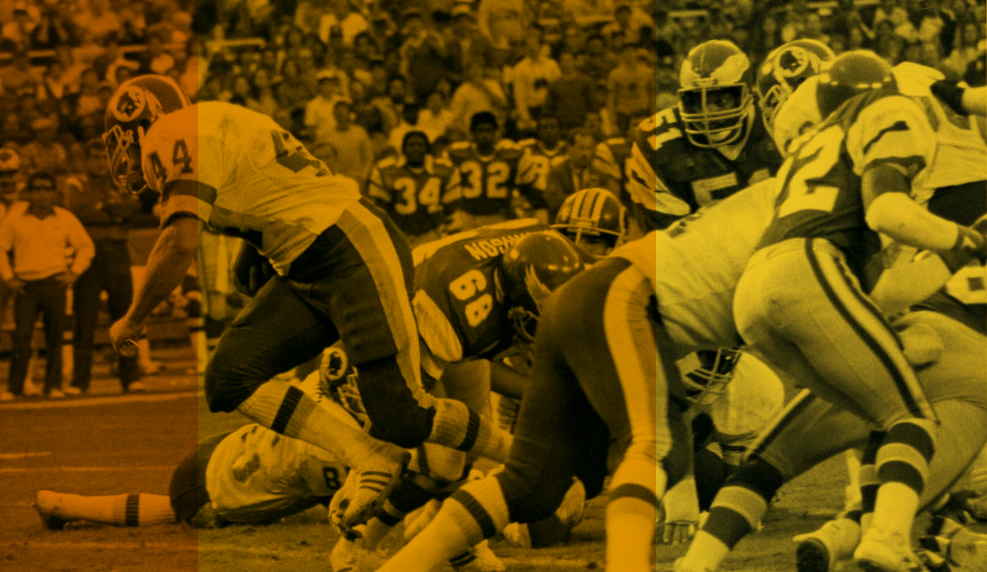Jim Brown: Football Has Forgotten the Men Who Made It Great
As the National Football League celebrates its 100th season, Pro Football Hall of Famer Jim Brown explains in an op-ed published today by The New York Times, that “rank-and-file players from the 1960s, ’70s and ’80s who helped make the league the $15 billion business it is today … are now, in old age, struggling to make ends meet. The reason is not that their salaries were in the thousands rather than the millions. It’s that their pensions from the league are shockingly, immorally, low.” Brown writes:
Most N.F.L. players who retired before 1993 receive a pension of about $365 a month per season they played, meaning that the typical seven-year player gets about $2,500 a month. Thousands get considerably less, and have stories you won’t see on network broadcasts. One star of those New York Jets’ Super Bowl team videos now lives in a trailer; unable to afford a dentist, he barely has any teeth. A standout lineman from the storied 1970s Minnesota Vikings played 17 years and gets just $2,300 a month (he took some of his pension early). That’s not enough to cover his football-related medical bills, leaving him and his wife living check to check. There are countless more like them.
Now, I am not one of these players. I was fortunate to have second careers, in marketing for PepsiCo and as an actor. But I know too many of these men and their families. They need a voice, one that can be heard over the highlights.
This situation is easily fixed. The N.F.L. and the players union are negotiating a labor agreement that will ultimately split up more than $100 billion — perhaps even $200 billion — in revenue. The money for dignified pensions is there. In fact, according to Fairness for Athletes in Retirement, an advocacy group, less than 1 percent of the revenue from each side, the players’ union and the league, would more than double the current pension for every pre-1993 player for the rest of their lives.
The question is whether the league and players want to step up for the men on whose knees, shoulders and brains the N.F.L. was built.
Team owners should understand the urgency. They see old players (many of whom they cheered in childhood) on canes at fund-raising events or in wheelchairs at Hall of Fame ceremonies. They know that films about the league’s history and the heavily sponsored 100th-season specials will make a fortune for the teams. And they also know that almost none of the players featured in those videos will get a dime of it. Today’s paltry pensions are the last vestige of the one-sided labor rules in the league before 1993.
The N.F.L. commissioner, Roger Goodell, has said, “Nothing the league can do can ever fully express our appreciation to the players who helped build our league.” I believe he is sincere, but real appreciation would be an appropriate pension.
Current players need more education about the history of their profession. They don’t understand that their seven- and eight-figure salaries exist only because players from the 1960s, ’70s and ’80s — who are now in their 60s, 70s and 80s themselves — risked and even sacrificed their careers to fight for basic employment rights that are now taken for granted.
Players of my generation and those who came after me fought to be represented by an agent, to get an independent medical opinion on injuries and to receive severance pay. They had no 401(k) plans or the annuity plans that today give players a total of $2 million as a retirement safety net.
Thousands of players went on strike in 1982 and 1987 to pursue and, eventually, win free agency for future generations of players. Yet today, the sole retirement benefit for these pioneers is a pension check that is less than what today’s average player makes per snap.
In football terms, today’s players should remember their blockers. As a running back, I know that you get only as far as the men who take punishment and remove obstacles for you to run. The nameless linemen in highlight reels didn’t block for just me and long-ago stars like Franco Harris and Walter Payton. They blocked for current players, too.
…
When you watch the 100th-season highlight packages, look for those blockers. The players may be remembered. But the men are forgotten.
Read Jim Brown’s full piece in the New York Times.


